Ditapis dengan

Shipping Practice
This book is written to guide the student through the various and extensive subjects connected with Shipping, without a deep treatment of the law, and the compilation has been arranged in a progressive order of study and as far as is possible within the scope of the volume, covers the necesssary subjects for the Institute of Charreted Shipbokers. This book contains The Shipping Company, The Sh…
- Edisi
- Eleventh Ed.
- ISBN/ISSN
- 0-273-01616-4
- Deskripsi Fisik
- xi, 173 p., : index : 21 cm
- Judul Seri
- -
- No. Panggil
- TXT PO STE s C.1

Casebook on Shipping Law
The contenst of the book consist of three part: Part I ("Sale, Mortgage and Lien") has been in view of the replacement of the Sale of Gooda Act. To this Part has been added Paccinini v. Partrederiet Trigon II: The "Alfred Trigon" which concerned the meaning of the words "free of average damage affecting class. Part II ("Carriage of Goods by Sea") are A/S Awilco v. Fulvia S.p.A di Navigazione …
- Edisi
- 3
- ISBN/ISSN
- 0-907432-41-7
- Deskripsi Fisik
- xiii, 205 p., :illus : index : 25 cm
- Judul Seri
- -
- No. Panggil
- PO IVA c

Ships and shipping : a comprehensive guide
- Edisi
- -
- ISBN/ISSN
- 0-87814-148-0
- Deskripsi Fisik
- xi, 252 p., 23 cm
- Judul Seri
- -
- No. Panggil
- TXT PO NER s
- Edisi
- -
- ISBN/ISSN
- 0-87814-148-0
- Deskripsi Fisik
- xi, 252 p., 23 cm
- Judul Seri
- -
- No. Panggil
- TXT PO NER s

Ninety percent of everything : inside shipping, the invisible industry that p…
On ship-tracking Web sites, the waters are black with dots. Each dot is a ship; each ship is laden with boxes; each box is laden with goods. In postindustrial economies, we no longer produce but buy, and so we must ship. Without shipping there would be no clothes, food, paper, or fuel. Without all those dots, the world would not work. Yet freight shipping is all but invisible. Away from publ…
- Edisi
- -
- ISBN/ISSN
- 978-0-8050-9263-9
- Deskripsi Fisik
- 287 p., 26 cm ; index ; pictures
- Judul Seri
- -
- No. Panggil
- LC 338.044 GEO n

Elusive corporate social responsibility (CSR) in global shipping
This paper aims to, using the example of the highly globalised shipping industry, shed light upon the practice of corporate social responsibility (CSR) and the extent to which it might be relied upon to fill international regulatory gaps.
- Edisi
- Vol. 6 No. 1, 2015 pp. 80-98
- ISBN/ISSN
- 2041-2568
- Deskripsi Fisik
- 22 p.
- Judul Seri
- Journal of Global Responsibility
- No. Panggil
- ATC PO SAM e

The Impact of Seafarers’ Perceptions of National Culture and Leadership on …
This research aims to examine the effects of national culture and leadership style on safety performance in bulk shipping companies. Survey data collected from 322 respondents working in dry bulk carriers was used, a multiple regression analysis was conducted to analyze the influence of national culture and leadership styles (i.e. transformational, passive management, and contingent reward) on …
- Edisi
- 4 (2016) 075 – 087
- ISBN/ISSN
- -
- Deskripsi Fisik
- 13 p.
- Judul Seri
- ScienceDirect
- No. Panggil
- ATC LO SHA t

The implicationsofArcticseaicedeclineonshipping
Althougha‘blue’ArcticOceanispredictedinthesummertimetooccurfromthemiddleofthiscentury, currentratesofwarmingindicateanearlierrealization.Also,routesalongthecoastofSiberiawillbe navigablemuchearlier.However,beforetheArcticroutescanreliablybeusedonalargescalefor transitbyshippingalongitspassages,moreinvestmentsarerequiredoninfrastructureandthe provisionofmarineservicestoensurethesafeandsecure…
- Edisi
- 34(2010)713–715
- ISBN/ISSN
- 0308-597X
- Deskripsi Fisik
- 3 p.
- Judul Seri
- MarinePolicy
- No. Panggil
- ATC LO JOS t

Will the Northern Sea Route ever be a viable alternative?
Since the decline in sea ice north of Russia became clear in the early 1990s, ideas of using the northern route for sea transport between Europe and Asia have taken a hold of the shipping community. Large and small research projects with varying complexity and results have looked into this option. In this article, the available information is studied in detail and four scenarios for the costs a…
- Edisi
- 2016
- ISBN/ISSN
- 1464-5254
- Deskripsi Fisik
- 16 p.
- Judul Seri
- Maritime Policy & Management The flagship journal of international shipping and port research
- No. Panggil
- ATC LO PRU w

The growth potential of container shipping on the Yangtze River
Despite the rapid economic growth in the Yangtze River Delta area, the Yangtze River itself is lagging behind as measured by the ratio of container volume to total freight volume. According to the Ministry of Communications’ statistics, more than 70% of cargoes generated in the Yangtze Valley are suitable for containerized transport, but, at this time, only a fraction of these cargoes are act…
- Edisi
- VOL. 35, NO. 6, 535–549
- ISBN/ISSN
- 1464–5254
- Deskripsi Fisik
- 17 p.
- Judul Seri
- Maritime Policy & Management: The flagship journal of international shipping and port research
- No. Panggil
- ATC LO VEE t

Stability and competition in intermodal container shipping: finding a balance
This article considers thc perennial topic of how to achieve an equilibrium balance between stability and competition in intermodal shipping. It argues that competition is becoming destructive, but that the imbalance is difficult to correct in a climate where competitive pressures are strong everywhere and restraints on competition are unfashionable. In this context, pricing of intermodal servi…
- Edisi
- 1998. VOL 25, NO 2, 129 147
- ISBN/ISSN
- -
- Deskripsi Fisik
- 21 p.
- Judul Seri
- Maritime Policy & Management: The flagship journal of international shipping and port research
- No. Panggil
- ATC LO GRA s

Scale and rationalization in container shipping
Returns to scale are important in container shipping; service operators are continuing to increase the size of their vessels. Mr Seok-Min Lim's article 'Economies of container ship size' (Maritime Policy and Management, 21 (2) pages 149-160.1994) uses a sample of transpacific voyages to evaluate the effect of vessel scale on revenue and cost. Although the results are inconclusive, his study is…
- Edisi
- 1994, VOL. 2 1, NO. 4,33 1-337
- ISBN/ISSN
- -
- Deskripsi Fisik
- 8 p.
- Judul Seri
- Maritime Policy & Management: The flagship journal of international shipping and port research
- No. Panggil
- ATC LO GRA s

Opportunities for increased profit and reduced cost and emissions by service …
This paper investigates opportunities for increased profit and reduced emissions and cost by service differentiation within container shipping. Traditionally the strategy among the container lines has been profit maximization by utilizing economies of scale through the building of larger and faster vessels. In 2008, the financial crisis in combination with higher fuel prices put an end to this …
- Edisi
- 2015
- ISBN/ISSN
- 1464-5254
- Deskripsi Fisik
- 16 p.
- Judul Seri
- Maritime Policy & Management he flagship journal of international shipping and port research
- No. Panggil
- ATC LO LIN o

On cost-efficiency of the global container shipping network
This paper presents a simple formulation in the form of a pipe network for modelling the global container-shipping network. The cost-efficiency and movement-patterns of the current container-shipping network have been investigated using heuristic methods. The model is able to reproduce the overall incomes, costs, and container movement patterns for the industry as well as for the individual shi…
- Edisi
- VOL. 32, NO. 1, 15–30
- ISBN/ISSN
- 1464–5254
- Deskripsi Fisik
- 18 p.
- Judul Seri
- Maritime Policy & Management: The flagship journal of international shipping and port research
- No. Panggil
- ATC LO SON o

Multicriteria analysis in shipping investment evaluation
This paper discusses the needs and possibilities of widening the traditional perspective through which shipping investment decisions are taken by embedding them in a multicriteria environment. The set off point has been the frequent observation that a shipping decision maker (DM) faced with ship investment decision-making is influenced by factors that are not clearly financial or cannot be easi…
- Edisi
- VOL. 39, NO. 4, 423–442
- ISBN/ISSN
- 1464–5254
- Deskripsi Fisik
- 20 p.
- Judul Seri
- Multicriteria analysis in shipping investment evaluation
- No. Panggil
- ATC LO ROU m

Internalization of port congestion: strategic effect behind shipping line del…
This paper develops a theoretical model to analyze the congestion internalization of the shipping lines, taking into account the ‘knock on’ effect (i.e. the congestion delay passed on from one port-of-call to the next port-of-call). We find that with the presence of the knock-on effect, liners will operate less in terminals, and an increase of a liner’s operation in one terminal will decr…
- Edisi
- 2016
- ISBN/ISSN
- 1464-5254
- Deskripsi Fisik
- 20 p.
- Judul Seri
- Maritime Policy & Management The flagship journal of international shipping and port research
- No. Panggil
- ATC LO JIA i

Impact of the container security initiative on Taiwan's shipping industry
This paper evaluates the impact of risk factors from the container security initiative on Taiwan’s shipping industry by employing a risk management matrix to identify the severity and frequency of CSI risk factors, and discovers some appropriate risk management alternatives. This paper’s findings are as follows: (1) The majority of risk factors have a moderate-risk level, and possible alte…
- Edisi
- VOL. 37, NO. 7, 699–722
- ISBN/ISSN
- 1464–5254
- Deskripsi Fisik
- 25 p.
- Judul Seri
- Maritime Policy & Management: The flagship journal of international shipping and port research
- No. Panggil
- ATC LO YAN i

Factors influencing container carriers’ use of coastal shipping
Coastal shipping is one of the most sustainable and economically competitive modes of transportation. This study employs the analytic hierarchy process (AHP) method to determine the importance of various factors influencing container carriers’ use of coastal shipping. A three-level hierarchical structure with the 17 attributes is proposed and tested. A previous AHP survey in Taiwan has indica…
- Edisi
- Vol. 41, No. 2, 192–208,
- ISBN/ISSN
- -
- Deskripsi Fisik
- 19 p.
- Judul Seri
- Maritime Policy & Management: The flagship journal of international shipping and port research
- No. Panggil
- ATC LO YAN f

Empty container reposition planning for intra-Asia liner shipping
This paper addresses empty container reposition planning by plainly considering safety stock management and geographical regions. This plan could avoid drawback in practice which collects mass empty containers at a port then repositions most empty containers at a time. Empty containers occupy slots on vessel and the liner shipping company loses chance to yield freight revenue. The problem is dr…
- Edisi
- VOL. 35, NO. 5, 469–489
- ISBN/ISSN
- 1464–5254
- Deskripsi Fisik
- 22 p.
- Judul Seri
- Maritime Policy & Management: The flagship journal of international shipping and port research
- No. Panggil
- ATC LO FEN e

Economies of scale in container shipping
Very large container ships are being built with the theoretical justification that they will produce economies of scale. It is clear, however. that the immediate result of the mega-ship buildings is an overtonnaging of the world's major liner routes. As major operators have put newer and bigger ships in the water, they have significantly reduced the slot costs in the container trades to which t…
- Edisi
- VOL. 25, NO. 4 361-373
- ISBN/ISSN
- -
- Deskripsi Fisik
- 15 p.
- Judul Seri
- Maritime Policy & Management: The flagship journal of international shipping and port research
- No. Panggil
- ATC LO LIM e

Determinants of slow steaming and implications on service patterns
The research focuses on the impact of the shipping strategy to decrease the commercial speed of container vessels, in order to reduce the bunker costs, on current service patterns. In this regard, the study also hypothesizes potential development trends in the near future. The reduction of the commercial speed, commonly referred to as “slow steaming,” has been introduced to mitigate the neg…
- Edisi
- -
- ISBN/ISSN
- Vol. 42, No. 7, 636–
- Deskripsi Fisik
- 18 p.
- Judul Seri
- Maritime Policy & Management The flagship journal of international shipping and port research
- No. Panggil
- ATC LO FER d

Competitiveness of Asian Container Terminals
The paper analyzes factors affecting the competitiveness of Asian container terminals by including quantitative as well as qualitative factors such as operating capacity, convenient facilities, electronic documents handling capacity and connectivity to hinterland. I provide evidence that those factors have a nonnegligible role as to competitiveness of container terminals. The paper applies a pa…
- Edisi
- Volume 26 Number 2 December 2010 pp. 225-246
- ISBN/ISSN
- -
- Deskripsi Fisik
- 22 p.
- Judul Seri
- The Asian Journal of Shipping and Logistics
- No. Panggil
- ATC LO YEO c

Case study analysis of the impacts of electronic commerce on the strategic ma…
Despite the prevalence of its use, very little is understood about the role of electronic commerce (EC) practice on the strategic management of container shipping companies. Four case studies were undertaken to assess the main uses, motivations, barriers and strategic relevance of EC in the container shipping industry between 1992 and 2002. The cases studies included one large, one medium and o…
- Edisi
- VOL. 34, NO. 1, 37–54
- ISBN/ISSN
- 1464–5254
- Deskripsi Fisik
- 20 p.
- Judul Seri
- Maritime Policy & Management: The flagship journal of international shipping and port research
- No. Panggil
- ATC LO PEN c

Analyzing the economic benefit of unmanned autonomous ships: An exploratory c…
Unmanned autonomous ships are seen as a key element of a competitive and sustainable European shipping industry in future. But even if the technology to further automate ships will principally be available at some point, this does not imply that autonomous vessels are also the superior choice for the ship owner. In the end the success of autonomous vessels depends on their impact on the profita…
- Edisi
- 2017
- ISBN/ISSN
- -
- Deskripsi Fisik
- 11 p.
- Judul Seri
- Research in Transportation Business & Management
- No. Panggil
- ATC LO KRE a

An analysis of freight rate volatility in dry bulk shipping markets
The world bulk shipping market has been in a peak period since 2003, and this has lasted an incredibly long time considering that the markets are much more complex than before. This paper investigates the characteristics of volatility in dry bulk freight rates of different vessel sizes (capesize, panamax and handysize). The daily returns of freight rate indices of three different types of bulk …
- Edisi
- VOL. 35, NO. 3, 237–251
- ISBN/ISSN
- 1464–5254
- Deskripsi Fisik
- 17p
- Judul Seri
- Maritime Policy & Management: The flagship journal of international shipping and port research
- No. Panggil
- ATC LO JIN a

A Recursive Algorithm for Order Cycle-time that Minimizes Logistics Cost
A firm's logistics cost, including shipping and inventory-carrying, is a substantial percentage of its sales. Nevertheless, typical inventory-control methods ignore or insufficiently represent the shipping cost. This paper describes a recursive algorithm that determines the reorder cycle-time that minimizes total logistics cost. It allows for a realistic accounting of shipping cost, which is mo…
- Edisi
- Vol. 40, No.4, pp. 367-377
- ISBN/ISSN
- -
- Deskripsi Fisik
- 11p
- Judul Seri
- A Recursive Algorithm for Order Cycle-time that Minimizes Logistics Cost
- No. Panggil
- ATC LO BUF a

A new approach to granting terminal concessions: the case of the Rotterdam Wo…
This paper describes in detail the award process of the concession for a large container terminal in the port of Rotterdam. This process can be termed competitive bidding, and differs from a tender because of the frequent interaction between the Port of Rotterdam Authority and the candidates. The competitive bidding process is a potentially attractive form in which to grant concessions, if ther…
- Edisi
- VOL. 39, NO. 1, 79–90
- ISBN/ISSN
- 1464–5254
- Deskripsi Fisik
- 14p
- Judul Seri
- Maritime Policy & Management: The flagship journal of international shipping and port research
- No. Panggil
- ATC LO LAN a

Staying afloat: A history of maritime passenger industry marketing
The purpose of this paper is to recount the history of the marketing of the maritime passenger industry (known today as the cruise industry). This is a unique industry that has survived and thrived for almost 175 years despite dramatic environmental changes. This history focuses on passenger shipping in and out of the USA first from/to European ports, later focusing on cruises from the USA to t…
- Edisi
- Vol. 6 No. 2, 2014 pp. 234-257
- ISBN/ISSN
- 1755-750X
- Deskripsi Fisik
- 25P
- Judul Seri
- Journal of Historical Research in Marketing
- No. Panggil
- ATC PO BRA b

Container Liner Shipping, Port Development and Competition
This chapter reviews and analyses the contemporary development of liner shipping, port development and competition. It begins with a comprehensive review on the latest developmental trends of liner shipping and business strategies, as well as their impacts on port development and competition. Then, it discusses the responses of ports, past, present and (likely) future, in addressing these new d…
- Edisi
- Vol. 13 Iss 4 pp. 401-446
- ISBN/ISSN
- 978-1-78052-340-8
- Deskripsi Fisik
- 27P
- Judul Seri
- Maritime Logistics
- No. Panggil
- ATC LO YNG c

Corporate Social Responsibility in Maritime Logistics
This chapter discusses the concept of corporate social responsibility (CSR) within the context of the container liner shipping industry. It looks at the current practice of CSR in this industry and outlines the framework, the reasons and the drivers for companies to adopt and implement a CSR strategy. These include, among others, the increasing commitment to fostering CSR in the private sector …
- Edisi
- 2012
- ISBN/ISSN
- 978-1-78052-340-8
- Deskripsi Fisik
- 26P
- Judul Seri
- Maritime Logistics
- No. Panggil
- ATC LO PAW c

Sea–river shipping competitiveness and its geographical market area for the…
The concept of sea–river shipping is simple: a single vessel sails both coastal and inland waters. Thus, seaport transhipment is avoided resulting in lower transport costs. However, this concept is limited to certain transport waterways. On the Rhoˆne–Saoˆne corridor, sea– river shipping can directly connect inland ports with Mediterranean seaports. The absence of transhipment raises th…
- Edisi
- -
- ISBN/ISSN
- 0966-6923
- Deskripsi Fisik
- 17 p.
- Judul Seri
- Journal of Transport Geography
- No. Panggil
- ATC PO LES e

Emissions from international shipping in the Belgian part of the North Sea an…
The objective of this study is to estimate the atmospheric emissions by international merchant shipping of carbondioxide (CO2), sulphur dioxide (SO2) and nitrogen oxides (NOX) during 1 year in the Belgian part of the North Sea, including the four Belgian seaports: Antwerp, Ghent, Ostend and Zeebrugge. The estimated emissions are based on a bottom-up, activity-based methodology (Group 1), coveri…
- Edisi
- -
- ISBN/ISSN
- 1352-2310
- Deskripsi Fisik
- 11 p.
- Judul Seri
- Atmospheric Environment
- No. Panggil
- ATC PO YER e

Maritime logistics in EU green ports and short sea shipping
- Edisi
- -
- ISBN/ISSN
- 978-1-78052-340-8
- Deskripsi Fisik
- 19 p.
- Judul Seri
- Maritime Logistics
- No. Panggil
- ATC MR GOU m
- Edisi
- -
- ISBN/ISSN
- 978-1-78052-340-8
- Deskripsi Fisik
- 19 p.
- Judul Seri
- Maritime Logistics
- No. Panggil
- ATC MR GOU m
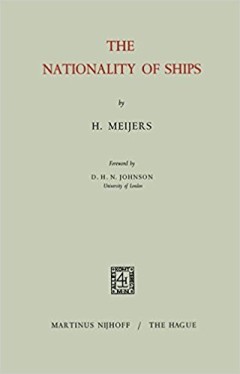
the Nationality of ships
- Edisi
- -
- ISBN/ISSN
- 978-94-011-951 0-2
- Deskripsi Fisik
- xiii, 395 p.
- Judul Seri
- -
- No. Panggil
- TXT LO MEI n
- Edisi
- -
- ISBN/ISSN
- 978-94-011-951 0-2
- Deskripsi Fisik
- xiii, 395 p.
- Judul Seri
- -
- No. Panggil
- TXT LO MEI n

the Regulation of international shipping : international and comparative pers…
- Edisi
- -
- ISBN/ISSN
- 978-90-04-20244-3
- Deskripsi Fisik
- xv, 585 p.
- Judul Seri
- -
- No. Panggil
- TXT LO CHI r
- Edisi
- -
- ISBN/ISSN
- 978-90-04-20244-3
- Deskripsi Fisik
- xv, 585 p.
- Judul Seri
- -
- No. Panggil
- TXT LO CHI r
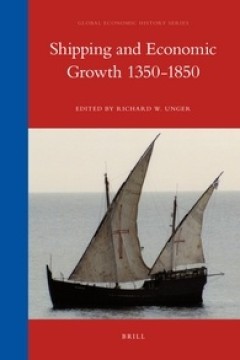
Shipping and economic growth 1350–1850
- Edisi
- -
- ISBN/ISSN
- 978-90-04-19439-7
- Deskripsi Fisik
- xix, 464 p.
- Judul Seri
- -
- No. Panggil
- TXT LO UNG s
- Edisi
- -
- ISBN/ISSN
- 978-90-04-19439-7
- Deskripsi Fisik
- xix, 464 p.
- Judul Seri
- -
- No. Panggil
- TXT LO UNG s
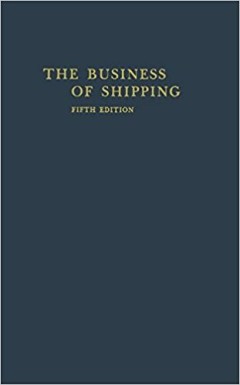
the Business of shipping
- Edisi
- -
- ISBN/ISSN
- 978-94-009-4117-5
- Deskripsi Fisik
- x, 513 p.
- Judul Seri
- -
- No. Panggil
- TXT LO KEN b
- Edisi
- -
- ISBN/ISSN
- 978-94-009-4117-5
- Deskripsi Fisik
- x, 513 p.
- Judul Seri
- -
- No. Panggil
- TXT LO KEN b

Ship motion control : course keeping and roll stabilisation using rudder and …
- Edisi
- -
- ISBN/ISSN
- 978-1-85233-959-3
- Deskripsi Fisik
- xxi, 300 p.
- Judul Seri
- -
- No. Panggil
- TXT MR PER s
- Edisi
- -
- ISBN/ISSN
- 978-1-85233-959-3
- Deskripsi Fisik
- xxi, 300 p.
- Judul Seri
- -
- No. Panggil
- TXT MR PER s

Seaports in international law
- Edisi
- -
- ISBN/ISSN
- 978-3-319-60396-4
- Deskripsi Fisik
- -
- Judul Seri
- -
- No. Panggil
- TXT MR CAS s
- Edisi
- -
- ISBN/ISSN
- 978-3-319-60396-4
- Deskripsi Fisik
- -
- Judul Seri
- -
- No. Panggil
- TXT MR CAS s

Robust Control of Diesel Ship Propulsion
- Edisi
- -
- ISBN/ISSN
- 978-1-4471-0191-8
- Deskripsi Fisik
- xiii, 214 p.
- Judul Seri
- -
- No. Panggil
- TXT LO XIR r
- Edisi
- -
- ISBN/ISSN
- 978-1-4471-0191-8
- Deskripsi Fisik
- xiii, 214 p.
- Judul Seri
- -
- No. Panggil
- TXT LO XIR r
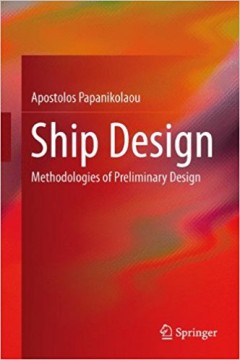
Ship design : methodologies of preliminary design
- Edisi
- -
- ISBN/ISSN
- 978-94-017-8751-2
- Deskripsi Fisik
- x, 621 p.
- Judul Seri
- -
- No. Panggil
- TXT LO PAP s
- Edisi
- -
- ISBN/ISSN
- 978-94-017-8751-2
- Deskripsi Fisik
- x, 621 p.
- Judul Seri
- -
- No. Panggil
- TXT LO PAP s
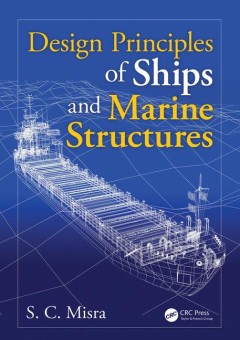
Design principles of ships and marine structures
- Edisi
- -
- ISBN/ISSN
- 13-978-4822-5447-1
- Deskripsi Fisik
- xxiii, 450 p.
- Judul Seri
- -
- No. Panggil
- TXT LO MIS d
- Edisi
- -
- ISBN/ISSN
- 13-978-4822-5447-1
- Deskripsi Fisik
- xxiii, 450 p.
- Judul Seri
- -
- No. Panggil
- TXT LO MIS d
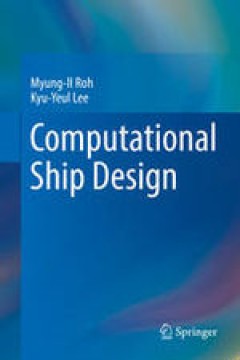
Computational ship design
- Edisi
- -
- ISBN/ISSN
- 978-981-10-4885-2
- Deskripsi Fisik
- xiv, 377 p.
- Judul Seri
- -
- No. Panggil
- TXT LO ROH c
- Edisi
- -
- ISBN/ISSN
- 978-981-10-4885-2
- Deskripsi Fisik
- xiv, 377 p.
- Judul Seri
- -
- No. Panggil
- TXT LO ROH c
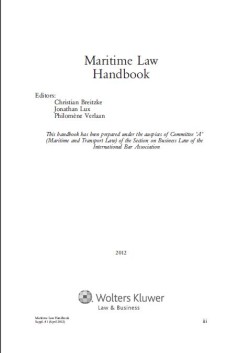
Maritime law
- Edisi
- 3rd edition
- ISBN/ISSN
- 978-1-315-75201-3
- Deskripsi Fisik
- lxxix, 554 p.
- Judul Seri
- -
- No. Panggil
- TXT MR BAA m
- Edisi
- 3rd edition
- ISBN/ISSN
- 978-1-315-75201-3
- Deskripsi Fisik
- lxxix, 554 p.
- Judul Seri
- -
- No. Panggil
- TXT MR BAA m
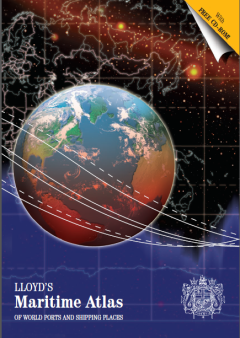
Maritime atlas of world ports and shipping
- Edisi
- -
- ISBN/ISSN
- 843-11-382
- Deskripsi Fisik
- -
- Judul Seri
- -
- No. Panggil
- TXT MR Ald m
- Edisi
- -
- ISBN/ISSN
- 843-11-382
- Deskripsi Fisik
- -
- Judul Seri
- -
- No. Panggil
- TXT MR Ald m
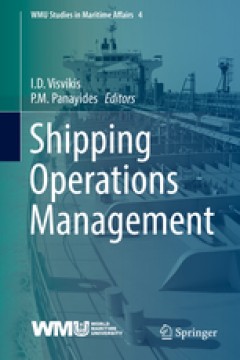
Shipping operations management
- Edisi
- -
- ISBN/ISSN
- 978-3-319-62365-8
- Deskripsi Fisik
- xxiii, 248 p.
- Judul Seri
- -
- No. Panggil
- TXT MR VIS s
- Edisi
- -
- ISBN/ISSN
- 978-3-319-62365-8
- Deskripsi Fisik
- xxiii, 248 p.
- Judul Seri
- -
- No. Panggil
- TXT MR VIS s
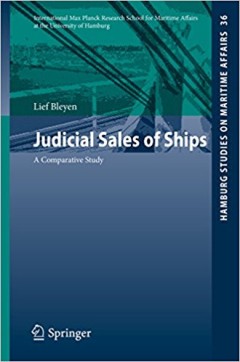
Judicial sales of ships : a comparative study
- Edisi
- -
- ISBN/ISSN
- 978-3-319-24376-4
- Deskripsi Fisik
- vix, 203 p.
- Judul Seri
- -
- No. Panggil
- TXT LO BLE j
- Edisi
- -
- ISBN/ISSN
- 978-3-319-24376-4
- Deskripsi Fisik
- vix, 203 p.
- Judul Seri
- -
- No. Panggil
- TXT LO BLE j
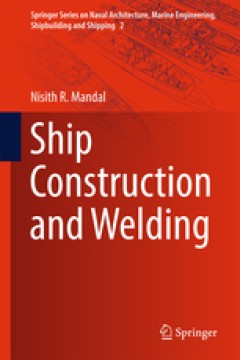
Ship construction and welding
- Edisi
- -
- ISBN/ISSN
- 978-981-10-2955-4
- Deskripsi Fisik
- xv, 314 p.
- Judul Seri
- -
- No. Panggil
- TXT LO MAN s
- Edisi
- -
- ISBN/ISSN
- 978-981-10-2955-4
- Deskripsi Fisik
- xv, 314 p.
- Judul Seri
- -
- No. Panggil
- TXT LO MAN s
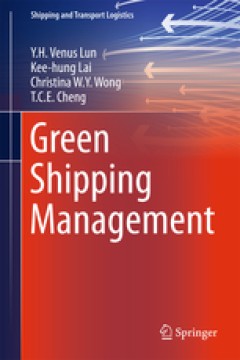
Green shipping management
- Edisi
- -
- ISBN/ISSN
- 978-3-319-26482-0
- Deskripsi Fisik
- viii, 133 p.
- Judul Seri
- -
- No. Panggil
- TXT MG LUN g
- Edisi
- -
- ISBN/ISSN
- 978-3-319-26482-0
- Deskripsi Fisik
- viii, 133 p.
- Judul Seri
- -
- No. Panggil
- TXT MG LUN g
Dynamic shipping and port development in the globalized economy volume 1 : ap…
- Edisi
- -
- ISBN/ISSN
- 978-1-137-51429-5
- Deskripsi Fisik
- xv, 229 p.
- Judul Seri
- -
- No. Panggil
- TXT PO LEE d
- Edisi
- -
- ISBN/ISSN
- 978-1-137-51429-5
- Deskripsi Fisik
- xv, 229 p.
- Judul Seri
- -
- No. Panggil
- TXT PO LEE d

Dynamics of liner shipping service scheduling and their impact on container p…
Container ports provide the primary interface where physical exchange between buyers and sellers of containerised shipping capacity can be consolidated and realised. Consequently, ports that are able to complement and add value to the objectives of shipping lines and shippers will become focal points for containerised cargo flows. To evaluate container port competition, the authors propose a pr…
- Edisi
- VOL. 38, NO. 5, 471–485
- ISBN/ISSN
- -
- Deskripsi Fisik
- 16 p .
- Judul Seri
- Maritime Policy & Management
- No. Panggil
- ATC LO NOT d
 Karya Umum
Karya Umum  Filsafat
Filsafat  Agama
Agama  Ilmu-ilmu Sosial
Ilmu-ilmu Sosial  Bahasa
Bahasa  Ilmu-ilmu Murni
Ilmu-ilmu Murni  Ilmu-ilmu Terapan
Ilmu-ilmu Terapan  Kesenian, Hiburan, dan Olahraga
Kesenian, Hiburan, dan Olahraga  Kesusastraan
Kesusastraan  Geografi dan Sejarah
Geografi dan Sejarah